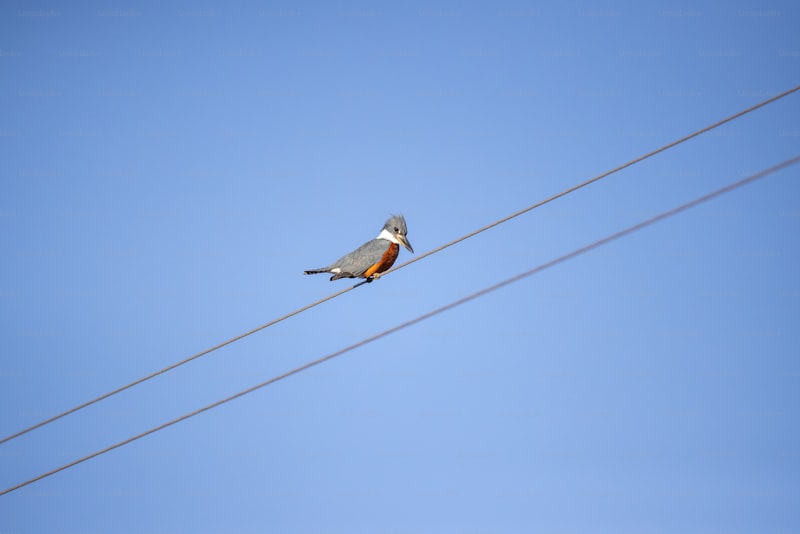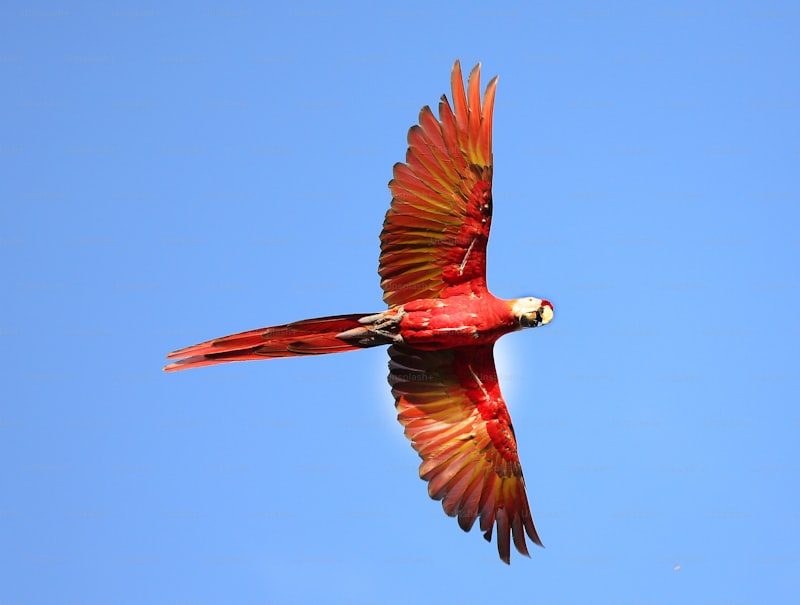One of the most remarkable adaptations is seen in the respiratory system of high-altitude birds. To compensate for lower oxygen levels, these birds have developed highly efficient respiratory mechanisms. Their lungs are more capacious and efficient in extracting oxygen from the thin air. Additionally, they possess a greater number of red blood cells and a higher concentration of hemoglobin, the protein responsible for transporting oxygen in the blood. This adaptation ensures that even with reduced oxygen availability, their tissues receive adequate oxygen supply for metabolism.
Another crucial adaptation is related to thermoregulation. High-altitude environments can be extremely cold, posing a challenge to maintaining body temperature. Birds that inhabit such regions often have thick, insulating feathers and specialized fat deposits that act as thermal insulation. These adaptations help conserve body heat, essential for their survival in cold mountainous regions.
In terms of metabolism, high-altitude birds exhibit adjustments that optimize energy expenditure. Their metabolic rate is finely tuned to cope with the challenges of reduced oxygen and cold temperatures. They have evolved to efficiently utilize available resources, minimizing energy wastage while ensuring sufficient energy reserves for flight and other essential activities.
Behaviorally, some high-altitude birds exhibit unique patterns such as seasonal migrations to lower altitudes during harsh winters. This behavior allows them to escape extreme cold and reduced food availability at higher elevations, ensuring their survival through the challenging winter months.
Overall, the physiological responses of birds to high altitudes are a testament to the marvels of evolution. Through specialized respiratory systems, thermoregulatory adaptations, metabolic efficiency, and behavioral strategies, these birds have conquered some of the Earth’s most extreme environments, showcasing nature’s ingenuity in adapting to diverse and challenging habitats.
Feathered High Flyers: How Birds Adapt Physiologically to Thin Air
Ever wondered how birds effortlessly soar through the skies, even at high altitudes where oxygen levels are significantly lower? Their ability to adapt physiologically to thin air is a marvel of nature, finely tuned over millennia of evolution.

One of the key adaptations birds employ is their highly efficient respiratory system. Unlike mammals, who have a diaphragm that pulls air into their lungs, birds have air sacs that act like bellows, continuously pumping fresh air through their lungs in a one-way flow. This unique system allows for a constant supply of oxygen, crucial for sustaining flight at varying altitudes.
Additionally, birds have evolved specialized hemoglobin in their blood, which binds more readily to oxygen molecules compared to mammals. This adaptation ensures that even in environments where oxygen levels are low, such as at high altitudes, their cells receive an adequate oxygen supply to support their metabolic needs during flight.
Another fascinating adaptation is the structure of a bird’s lungs themselves. They are compact yet highly efficient, with a system of air capillaries that maximize the surface area available for gas exchange. This anatomical feature enables birds to extract oxygen from the air more effectively, compensating for the lower oxygen concentrations found at higher elevations.
Furthermore, birds have lighter bones compared to mammals of similar size, which reduces their overall weight and energy expenditure during flight. This adaptation allows them to conserve energy while navigating through thin air, making their flights more efficient and prolonged.
Birds’ ability to thrive in thin air showcases nature’s ingenuity in adapting to diverse environments. From their efficient respiratory system to specialized blood chemistry and lightweight skeletal structure, every aspect of a bird’s physiology is finely tuned for flight at varying altitudes. Next time you watch a bird gracefully gliding overhead, remember the intricate physiological adaptations that enable them to conquer the skies effortlessly.
From Oxygen Efficiency to Feathery Adaptations: The Secrets of Birds at High Altitudes
Imagine a world where every breath counts. High-altitude birds like bar-headed geese and Andean condors have evolved to excel in these extreme conditions. Their secret lies in efficient oxygen utilization and feathered adaptations that defy the odds.
At high altitudes, oxygen levels drop significantly, posing a challenge for most animals. However, birds have developed ingenious respiratory systems. Their lungs are more efficient, extracting oxygen from thin air with each breath. This adaptation allows them to maintain high levels of activity despite the low oxygen availability.
Feathers play a crucial role beyond flight. They act as insulators, shielding birds from freezing temperatures. The downy layers trap air close to the body, creating a thermal barrier that keeps warmth in and cold out. This adaptation is vital for survival in environments where temperatures can plummet dramatically.
Consider the bar-headed goose, famed for its annual migration over the Himalayas. This species navigates peaks exceeding 29,000 feet, enduring temperatures well below freezing. Its ability to optimize oxygen use and conserve body heat through feather insulation is nothing short of remarkable.
The Andean condor presents another compelling case. With a wingspan that can reach over ten feet, it soars effortlessly above the Andes Mountains, often surpassing 15,000 feet. Its expansive wings are not just for flight but also serve as heat regulators, adjusting to capture warm updrafts and cool air currents efficiently.
Exploring Avian Resilience: Insights into High Altitude Survival Mechanisms
Birds, unlike humans, have adapted remarkable physiological features that enable them to conquer high altitudes effortlessly. One key adaptation involves their respiratory system. At high altitudes, where oxygen levels are lower, birds have evolved efficient respiratory systems that maximize oxygen intake. Their lungs are highly efficient, extracting more oxygen with each breath compared to mammals. This adaptation allows them to maintain high levels of activity without succumbing to oxygen deprivation.
Another critical adaptation is their cardiovascular system. Birds possess strong hearts and circulatory systems that efficiently transport oxygenated blood throughout their bodies. This helps them cope with the lower atmospheric pressure and oxygen availability at high altitudes. Their blood carries more oxygen per unit volume, ensuring vital organs receive sufficient oxygen even in challenging conditions.
Furthermore, birds exhibit exceptional thermoregulation mechanisms. In high-altitude environments, temperatures can fluctuate drastically. Birds have evolved insulating feathers and specialized metabolic processes that help them regulate body temperature effectively. Some species can even enter a temporary state of torpor during extremely cold periods, conserving energy until conditions improve.
Interestingly, behavioral adaptations also play a crucial role in avian resilience at high altitudes. Many birds adjust their daily routines and feeding behaviors to optimize energy expenditure and maximize survival chances. Some species migrate to lower altitudes during harsh winters, where food and temperature conditions are more favorable, showcasing their adaptive flexibility.
Flight Above the Clouds: Unraveling the Biology of Birds in Thin Air

At high altitudes, the air thins out, posing challenges for most creatures. However, birds have evolved remarkable adaptations to conquer these heights. Their respiratory systems are finely tuned, extracting oxygen efficiently from the sparse air. Unlike mammals, birds have air sacs that aid in continuous airflow through their lungs, ensuring a constant supply of oxygen even during strenuous flights.
Feathers play a crucial role beyond just flight—they provide insulation against the cold temperatures prevalent at high altitudes. These intricate structures not only streamline birds for efficient flight but also serve as protective barriers against harsh weather conditions. Birds like the bar-headed goose are known for their incredible migrations over the Himalayas, reaching altitudes where oxygen levels are significantly lower than at sea level.
In the thin air above the clouds, navigation becomes a feat of precision. Birds rely on keen eyesight and magnetic sensors in their brains to navigate over vast distances. This remarkable sense of direction is essential for their migrations, guiding them through changing weather patterns and landscapes.
The biology of birds in thin air offers a glimpse into the wonders of adaptation and evolution. From their respiratory systems to feathered insulation and navigational prowess, each aspect is finely tuned to enable them to explore and thrive in the skies above. As we unravel these biological marvels, we gain deeper insights into the interconnectedness of life on our planet—where even the thin air becomes a realm of awe and wonder.
Frequently Asked Questions
What physiological adaptations do birds exhibit at high altitudes?
Learn about the physiological adaptations birds develop at high altitudes, including enhanced oxygen uptake efficiency, increased red blood cell production, and unique respiratory systems tailored for thin air.
How do birds maintain body temperature in mountainous regions?
Birds in mountainous regions maintain their body temperature through several adaptations. They have dense feathers that provide insulation against cold temperatures and wind. Metabolic processes generate heat, which is conserved through efficient circulation. Some birds also adjust their metabolism to produce more heat in colder environments. Overall, these adaptations help birds regulate their body temperature and thrive in mountain habitats.
Do different bird species show varying responses to high-altitude conditions?
Learn how different bird species adapt to high-altitude conditions and understand the varying physiological and behavioral responses across species.
What changes occur in bird metabolism at high altitudes?
Learn about the changes in bird metabolism at high altitudes, including adaptations like increased oxygen delivery efficiency and altered energy metabolism to cope with lower oxygen levels. Discover how these adaptations help birds thrive in challenging high-altitude environments.
How do birds regulate their oxygen intake in high-altitude environments?
Learn how birds adapt to high-altitude environments by regulating their oxygen intake efficiently.



[…] Physiological Responses to High Altitude in Birds […]
[…] Physiological Responses to High Altitude in Birds […]
[…] Physiological Responses to High Altitude in Birds […]
[…] Physiological Responses to High Altitude in Birds […]